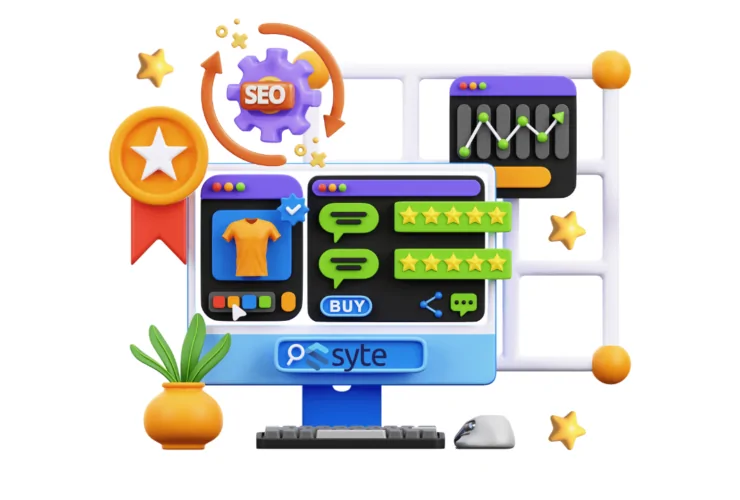Mobile ecommerce isn’t just growing; it’s transforming the entire e-commerce landscape. As more consumers rely on smartphones for their shopping needs, optimizing your mobile e-commerce experience is no longer optional—it’s essential. If you’re not prioritizing e-commerce mobile optimizations, you’re missing out on sales and potential long-term customer relationships. So, how do you ensure your online store is ready to capture the ever-expanding mobile market in 2024?
In this guide, we’ll dive deep into mobile-first design, performance optimization, user experience enhancements, and the emerging technologies that are shaping the future of mobile e-commerce. Let’s unpack the strategies you need to implement to stay competitive.
Mobile-First Design: Why Prioritizing Mobile Users Matters
What is Mobile-First Design, and Why Does It Matter?
Let’s get one thing straight: mobile-first design isn’t just about making sure your website looks good on a phone—it’s about designing with mobile users as your top priority. The difference between mobile-first and traditional responsive design? Responsive design adapts a desktop site to fit smaller screens, while mobile-first starts by designing for smartphones and scales up.
Why is this crucial in 2024? Because mobile shoppers have skyrocketed, and they expect a seamless experience. Clunky navigation, slow load times, or non-intuitive interfaces? Kiss those potential sales goodbye.
Key Elements of Effective Mobile-First Design
Now that we understand why mobile-first design is essential, let’s break down the elements that will make or break your mobile user experience:
- Simplified Navigation: Think about how users interact with their phones—single-handed, scrolling with a thumb. Opt for streamlined menus (hello, hamburger menu!) that keep everything accessible without crowding the screen.
- Touch-Friendly Interfaces: Make sure your buttons are large enough to tap without frustration. Swipe gestures and touch-friendly elements like sliders can also enhance navigation.
- One-Handed Usability: People often use their phones with one hand, especially in transit. Ensure interactive elements like buttons and forms are within reach—don’t make users stretch their thumb across the screen.
Optimizing Content Hierarchy for Mobile
Mobile screens are limited real estate, so your content needs to be prioritized effectively. For example, you want your calls-to-action (CTAs) front and center—don’t bury them. Also, consider how you present product images and descriptions. Larger, high-quality visuals with zoom capabilities give users confidence in what they’re buying. Just be sure those images don’t slow down your site (we’ll cover that next).
Performance Optimization: Speed is Non-Negotiable
Why Fast Loading Times Are Critical
In mobile e-commerce, speed is a competitive advantage. Research shows that 53% of mobile users abandon a site that takes longer than three seconds to load. Three seconds! If your mobile site is slow, you’re losing out on more than half your potential customers.
It’s not just about user frustration, though. Site speed directly impacts your conversion rates. If your pages are sluggish, users will drop off before making a purchase, and worse, you’ll take a hit in SEO rankings.
Key Performance Optimization Techniques
So, how do you optimize your mobile site’s performance? Here are some tried-and-true tactics:
- Image Optimization: High-quality product images are essential, but they shouldn’t be oversized. Compress images without sacrificing quality to ensure faster load times.
- Accelerated Mobile Pages (AMP) and Progressive Web Apps (PWAs): AMP pages load almost instantly, while PWAs offer an app-like experience within a browser, providing users with the best of both worlds—speed and engagement.
- Lazy Loading: Only load images and elements when they’re about to come into the user’s view. This dramatically improves your initial page load time.
- Minimizing HTTP Requests: Fewer requests mean faster load times. Reduce the number of elements like scripts, stylesheets, and images that load on a page.
Prioritizing Content Loading for Mobile
You can improve the user experience by loading the most critical elements first. Above-the-fold content (what users see before they scroll) should load instantly, allowing them to interact with the site while other elements load in the background.
Enhancing User Experience: A Frictionless Mobile Shopping Journey
Streamlining the Mobile Checkout Process
Here’s a mobile e-commerce truth: the longer and more complicated your checkout process, the higher your cart abandonment rates. On mobile, simplicity is key.
To streamline the checkout process:
- Reduce Form Fields: Only ask for the essentials. The more fields users need to fill out, the more likely they are to bail.
- Offer Guest Checkout: Don’t force account creation. Provide a guest checkout option to reduce friction.
- Integrate Mobile Payment Options: Tools like Apple Pay and Google Pay make checkout fast and effortless. Users can complete a purchase in just a few taps, significantly boosting conversion rates.
Personalizing the Mobile Shopping Experience
Personalization is more than just a buzzword—it’s becoming a core strategy in mobile e-commerce optimization. By leveraging AI-driven recommendations, you can tailor product suggestions based on user behavior. Whether it’s “Customers who bought this also bought…” or personalized discounts based on past interactions, these tailored experiences drive conversions.
Think of personalization like having a helpful sales assistant guiding your shoppers: the more relevant the suggestions, the more likely users are to buy.
Enhancing Interaction with Emerging Features
Interactivity matters. Features like swipe gestures, pinch-to-zoom for product images, and even 360-degree views give users a richer experience, closer to what they might get in-store. In 2024, users will expect more from their mobile e-commerce experiences, so implementing these intuitive interactions will set you apart.
Emerging Technologies Shaping the Future of Mobile Commerce
Augmented Reality (AR): Visualizing Products in Real-Time
AR is no longer sci-fi. In 2024, it’s a powerful tool for e-commerce brands. Imagine allowing users to visualize how a piece of furniture would look in their living room, or virtually trying on clothes and accessories.
AR helps bridge the gap between online and in-store shopping, reducing return rates and boosting customer confidence in their purchases. For industries like fashion and home decor, this technology is a game-changer.
Voice Search: The New Frontier in Mobile Shopping
With the rise of voice-activated assistants like Alexa and Siri, voice search is becoming a staple in mobile e-commerce. Adapting your site for natural language queries is critical for staying relevant. Voice search often leads to higher intent, meaning users are more likely to convert after a search, so make sure your site can handle these queries smoothly.
5G: The Next Big Leap for Mobile Commerce
5G promises faster load times, richer media experiences, and seamless interactions. The improved speeds mean more complex visuals, videos, and AR features can be incorporated into mobile sites without sacrificing performance. If you’re not preparing for 5G, your competitors probably are.
FAQs
1. Why is mobile-first design important in e-commerce?
Mobile-first design ensures that your site is optimized for the devices your customers use most—smartphones. By prioritizing mobile users, you’ll provide a seamless experience that boosts engagement and conversions.
2. How can I improve my mobile site speed?
Start by optimizing your images, reducing HTTP requests, and implementing technologies like AMP or PWAs. Additionally, use lazy loading to ensure only the essential elements are loaded first.
3. What are the key emerging trends in mobile e-commerce?
Augmented reality (AR), voice search optimization, and the advent of 5G are some of the most significant trends shaping mobile e-commerce in 2024. Each of these technologies will improve user interaction and engagement, driving more sales.
Challenges and Debates in Mobile Optimization
Mobile-First vs. Responsive Design: Which is Better?
While mobile-first design focuses on optimizing the mobile experience from the start, responsive design adjusts a desktop layout to fit different screen sizes. In 2024, businesses will need to carefully weigh both approaches to find the right balance for their audience.
Native Apps vs. Mobile Web: The Ongoing Debate
Should you invest in a native mobile app or stick with an optimized mobile site? Apps offer a more customized, feature-rich experience, but they require users to download and update them. On the other , an optimized mobile website is accessible to everyone and can still deliver excellent performance with the right tweaks.
Privacy Concerns in Personalization
Striking the right balance between personalization and user privacy is tricky. While AI and behavioral data offer insights to improve the shopping experience, users are more cautious about their personal data. Ensure transparency and implement strong data protection measures to build trust.
The mobile commerce world is advancing rapidly, and in 2024, e-commerce mobile optimizations are no longer a “nice to have”—they’re a must. By focusing on mobile-first design, optimizing performance, and embracing emerging technologies, you’ll be ready to meet the demands of a mobile-first market.
At Syte, we understand that mobile e-commerce is transforming faster than ever, and staying ahead in 2024 requires more than just adapting to trends—it requires mastering them. Our team of digital marketing and SEO experts is here to help you implement the mobile-first strategies, performance enhancements, and cutting-edge technologies that will keep your online store competitive and thriving.
If you’re ready to optimize your mobile e-commerce experience and drive more conversions, Syte has the expertise to guide you every step of the way. Contact us today to learn how we can elevate your mobile strategy and help you succeed in this mobile-first world.




